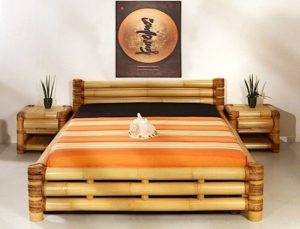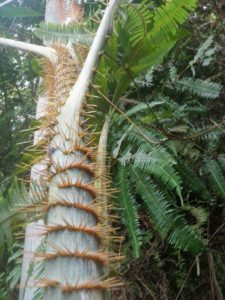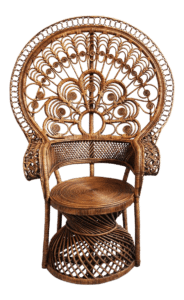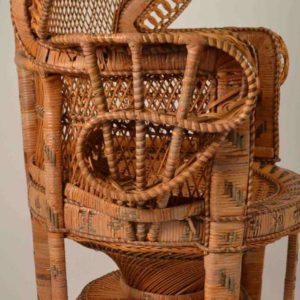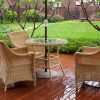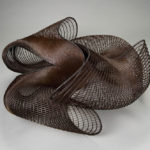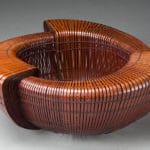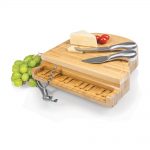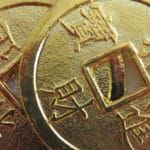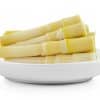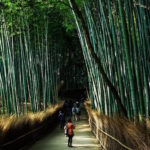What are the differences between Bamboo, Rattan, Cane, and Wicker?
I was out shopping for patio furniture and ran across a cool outdoor set that would look great in my back yard. At first glance I thought it was bamboo. On closer inspection the label read “Rattan”. To complicate matters further I saw the words “wicker” and “cane”. I always assumed that bamboo, rattan, cane, and wicker were all words for the same thing. When I got home I looked it up – I was wrong.
Wicker
First, let’s get the word “wicker” out of the way. Wicker is the name of “the process” used to weave natural or synthetic materials into furniture. Natural materials include: reed, sea grass, rattan, cane, willow, and bamboo. Synthetic materials include resin and vinyl that look completely natural and handle the outdoor elements very well.
That’s it. It’s not a species of grass or wood it’s the name of “the process” of weaving materials into furniture, as well as the name of that particular style of furniture – “wicker furniture”.
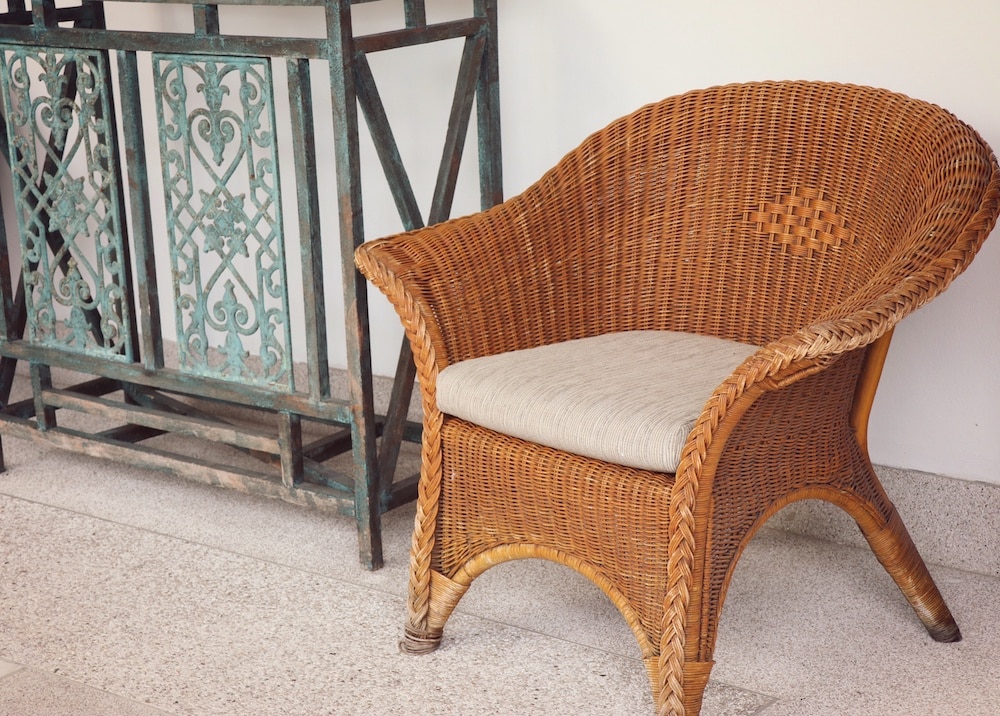
brown rattan wicker chair
Next, Bamboo and Rattan
Although they can appear very similar bamboo and rattan are quite different. Here are just a few differences:
- Bamboo is from the grass family… Rattan is a type of palm tree from South East Asia.
- Some species of bamboo will grow to be HUGE such as bamboo timber… Rattan although extremely strong doesn’t get very big.
- Bamboo is hollow… Rattan has a solid core.
Bamboo
Bamboo is a hollow, giant grass. Some of the largest timber bamboo has been reported to grow over 98 feet (30m) tall with a diameter of 9-12 inches (25-30cm). Even though it’s classified as a grass, the timber is said to be harder than mahogany.
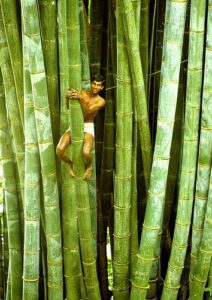
Larger applications of bamboo timber are houses, flooring, walls, and furniture to name a few.
Smaller diameter bamboo poles are used for a variety of things: plant stakes, fountains and other decorative items.
Rattan
Rattan is a relative of the palm tree from South East Asia. Rattan vines are durable, flexible and have a solid core. Rattan grows like a tree but will bend back down to the earth and then travel underground instead like a vine. It’s one of the strongest woods in the world and has been used to build foot bridges in many countries. It is excellent for making smaller items like wicker furniture.
When making rattan furniture, the straight poles are usually bent to a desired shape by using steam and then hung to dry. Once dry, they will retain that shape always. Shaped poles and spindly vines are often the materials used in the process of weaving wicker furniture.
It has a fast rate of growth and is an easily renewable resource.
Lastly, Cane
Cane is simply the outer bark or skin of the rattan vine. Because it is strong, it is commonly used for binding and therefore you will see many items using cane to tie the individual pieces together. Cane is also used as a beautiful finishing material as seen in the flat-wrapping of the peacock chair below.
Cane is less porous than other materials and will repel spills more readily – just wipe it down.
To Summarize:
Wicker is a process using natural or synthetic materials to weave chairs, tables etc. and is also the name of that style of furniture – wicker furniture.
Bamboo is a grass and is hollow. The giant timber can grow to over 98 feet tall. It is harder than mahogany.
Rattan is a vine and has a solid center. It is one of the hardest woods in the world. It can be bent and woven. It never grows as thick as bamboo or as tall.
Cane is the outer bark of the rattan plant and used for tying pieces together and for wrappings such as finishing touches.
Finally, cane, rattan, and bamboo furniture are environmentally friendly and easily renewable resources. Purchasing or making your own bamboo or rattan wicker furniture reduces your carbon footprint.
And there you have it – bamboo, rattan, cane, and wicker – mystery solved.
PHOTO CREDITS:
Patio Set: Adobe Stock
Wicker Chair : Adobe Stock
Bamboo Timber: Flicker
Rattan Plant: Pinterest
Peacock Chair: Pinterest
Cane Wrapping: Pinterest
Bamboo Bedroom Furniture: Pinterest
Views: 11874


